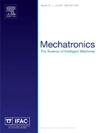6轮移动机器人GFRP梁弹簧摇臂悬架的新设计
IF 3.1
3区 计算机科学
Q2 AUTOMATION & CONTROL SYSTEMS
引用次数: 0
摘要
采用摇臂-转向架悬挂系统的六轮移动机器人由于具有良好的地形适应性,被广泛应用于行星探测和搜救任务中。然而,传统的摇臂转向架系统存在严重的局限性,包括由于缺乏转向机构而导致的轮胎打滑,缺乏弧度控制,以及增加组件增加的结构复杂性。为了克服这些问题,本研究引入了GFRP梁弹簧摇臂悬架(GBSRS),该悬架将摇臂结构与玻璃纤维增强聚合物(GFRP)梁弹簧集成在一起。基于Ackermann几何结构的独立转向系统可以最大限度地减少轮胎打滑,而GFRP梁的扭转和垂直顺应性可以实现被动弧度变化和振动阻尼,而无需使用额外的执行器或复杂的连接。建立了7自由度(7-DOF)振动模型,模拟了梁的动力特性,并进行了弯扭耦合分析,计算了梁的变形和弯曲响应。通过应用Derringer期望函数对梁厚度、阻尼器位置和弧度调节器角度等关键参数进行优化设计。仿真和实验结果(包括在单一障碍物和崎岖地形上的测试)表明,与传统的固体臂系统相比,GBSRS的均方根加速度可降低16.3%,峰值加速度可降低40.6%。这些结果证实,GBSRS在保持结构简单的同时,有效地提高了隔振性和弧度适应性,为6- wmr在具有挑战性的环境中提供了一种实用的悬架解决方案。本文章由计算机程序翻译,如有差异,请以英文原文为准。
Novel design of GFRP beam spring rocker-arm suspension for 6-wheeled mobile robots
Six-wheeled mobile robots (6-WMRs) equipped with rocker-bogie suspension systems are widely used for planetary exploration and search-and-rescue tasks due to their excellent terrain adaptability. However, conventional rocker-bogie-based systems present critical limitations, including tire slip caused by the absence of steering mechanisms, lack of camber control, and increased structural complexity from added components. To overcome these issues, this study introduces the GFRP Beam Spring Rocker-arm Suspension (GBSRS), which integrates a rocker-arm structure with a Glass Fiber Reinforced Polymer (GFRP) beam spring. An independent steering system based on Ackermann geometry is applied to minimize tire slip, while the torsional and vertical compliance of the GFRP beam enables passive camber variation and vibration damping without the use of additional actuators or complex linkages. A 7-degree-of-freedom (7-DOF) vibration model is developed to simulate dynamic behavior, and a bend-twist coupling analysis is conducted to calculate beam deformation and camber response. The design is further optimized by applying Derringer’s desirability function to key parameters such as beam thickness, damper position, and camber adjuster angle. Simulation and experimental results—including tests over single obstacles and rough terrain—demonstrate that the GBSRS reduces RMS acceleration by up to 16.3% and peak acceleration by up to 40.6% compared to conventional solid-arm systems. These results confirm that the GBSRS effectively improves vibration isolation and camber adaptability while maintaining structural simplicity, offering a practical suspension solution for 6-WMRs in challenging environments.
求助全文
通过发布文献求助,成功后即可免费获取论文全文。
去求助
来源期刊

Mechatronics
工程技术-工程:电子与电气
CiteScore
5.90
自引率
9.10%
发文量
0
审稿时长
109 days
期刊介绍:
Mechatronics is the synergistic combination of precision mechanical engineering, electronic control and systems thinking in the design of products and manufacturing processes. It relates to the design of systems, devices and products aimed at achieving an optimal balance between basic mechanical structure and its overall control. The purpose of this journal is to provide rapid publication of topical papers featuring practical developments in mechatronics. It will cover a wide range of application areas including consumer product design, instrumentation, manufacturing methods, computer integration and process and device control, and will attract a readership from across the industrial and academic research spectrum. Particular importance will be attached to aspects of innovation in mechatronics design philosophy which illustrate the benefits obtainable by an a priori integration of functionality with embedded microprocessor control. A major item will be the design of machines, devices and systems possessing a degree of computer based intelligence. The journal seeks to publish research progress in this field with an emphasis on the applied rather than the theoretical. It will also serve the dual role of bringing greater recognition to this important area of engineering.
 求助内容:
求助内容: 应助结果提醒方式:
应助结果提醒方式:


